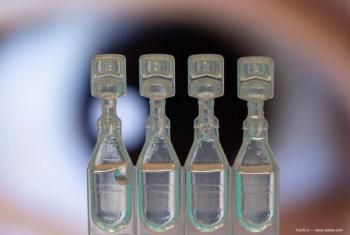
ARVO LIVE: BUTTERFLEYE data trial results
Ophthalmology Times® talked with Darius Moshfeghi, MD, about BUTTERFLEYE data trial results using aflibercept versus laser for the treatment of retinopathy of prematurity this year's ARVO meeting.
Ophthalmology Times® talked with Darius Moshfeghi, MD, about BUTTERFLEYE data trial results using aflibercept versus laser for the treatment of retinopathy of prematurity this year's ARVO meeting.
Video transcript
Editor’s note: Transcript lightly edited for clarity.
Darius Moshfeghi, MD:
I'm Darius Moshfeghi. I'm the Chief of Retina at Stanford University. I'm here in New Orleans at the ARVO meeting where I'm presenting on the BUTTERFLEYE data, which is an overview of our pivotal trial results using aflibercept versus laser for the treatment of retinopathy of prematurity. And, while the data did not meet its non-inferiority endpoint, clinically, the results were meaningful and in combination with the FIREFLEYE trial, which was a concomitant trial that was run in Europe, by Bayer. The data was submitted to the FDA, and in February, it was the first pharmacologic approved for the treatment of retinopathy of prematurity, which is a big step in our field for treatment of retinopathy of prematurity.
Overall, the numbers were clinically relevant. What I mean by that is about 79% of the aflibercept-treated arm versus 77% of the laser-treated arm achieved the primary outcome. What was the primary outcome that was absence of active ROP and absence of adverse anatomic outcomes, such as a retinal fold, retinal detachment, [or] macular dragging. You had to have both of those at the primary endpoint, which is at 52 weeks chronologic age, which differed slightly from the FIREFLEYE trial.
Entry criteria were pretty straightforward: 32 weeks gestational age or less, 1500 grams or less. They had to have a weight of 1000 grams at the time of randomization, and they were randomized 3 to 1 aflibercept to laser photocoagulation treatment. There were more recurrences of ROP, but fewer needs for rescue treatment in the aflibercept-arm versus the laser-treated arm, and importantly at a 20% dose of 0.4 milligrams aflibercept relative to adult dosing of two milligrams, the safety profile was very similar and safe, and there were no significant adverse events. Importantly, retinal detachment occurred less in the retinopathy of prematurity group that was treated with aflibercept than in the laser-treated group.
Newsletter
Don’t miss out—get Ophthalmology Times updates on the latest clinical advancements and expert interviews, straight to your inbox.














































.png)


